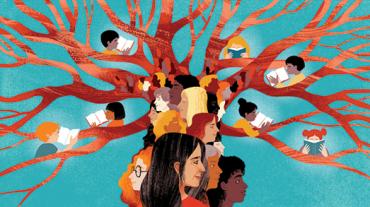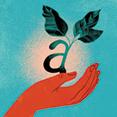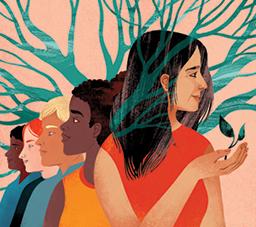For 10 years, I was a college professor dutifully checking all the required boxes for both tenure and promotion. I taught classes on reading assessment and intervention, published articles, and gave presentations at conferences and in schools. I was determined that my work might play a part in moving the needle on promoting the science of reading.
The science of reading is a body of empirical research derived from multiple disciplines—cognitive psychology, neuroscience, linguistics, and education. Taken together, the findings from thousands of research studies over the last 40 years have reached a consensus on how the brain learns to read and write, and why some students struggle. The science of reading provides knowledge about the most effective ways to assess and teach reading so we can prevent most reading difficulties, and remediate them when they occur. The science of reading informs instructional approaches that best advantage all learners in all areas of reading (phonological awareness,1 phonics,2 vocabulary,3 spelling,4 and language comprehension5). (For more on each of these areas, see the articles here, here, here, and here.) Contrary to commonly held beliefs, it is not just about phonics.
I knew this reading research well because I had learned its principles during my master’s and doctoral work under the tutelage of my advisor and mentor, Benita Blachman, who was at the forefront of researching phonological awareness, as well as how to prevent and remediate reading difficulties. I was also fortunate to coordinate some of the National Institute of Child Health and Human Development reading intervention studies Blachman conducted.6 During this time, I came to know some of the world’s finest reading research scientists, and I learned how the scientific process of investigating reading works.
Challenges Implementing the Reading Research
Perhaps the most valuable part of coordinating those studies was training the teachers participating in the research on how to deliver the instructional approaches we were studying. I met educators who were so dedicated and successful in teaching their students to read that it made a significant impression on me. I saw that it could be done—not just by researchers—but by teachers in classrooms.
The students in our studies often came from disadvantaged and underserved populations. The schools did not have a lot of money. Yet, the students who received the interventions learned to read at higher rates because their teachers had access to knowledge about how to most effectively teach them. We conducted a follow-up study more than a decade later and saw that data related to educational outcomes, such as high school completion, favored those who had received the interventions.7
District leaders did not receive the same knowledge that the teachers had acquired. The decision makers in the districts where we did this research chose to have teachers discontinue the more effective approaches and return to business as usual after the studies ended (a very common problem in the research community). It was devastating to hear that the teachers who had been so excited about their learning were mandated to use approaches that were popular, expensive, and far less effective. What had worked was gone.
It did not take long before I felt that so much of my teaching, publishing, and presenting was akin to sweeping the ocean with a broom. A 15-week semester to cover the many aspects of the science of reading is not enough time to present the material with the depth needed to make it stick. Teacher preparation programs typically offer only two to three classes in how to teach literacy.8 In some instances, my students attended other classes in which the content contradicted what I was teaching. My students were being hired in schools that did not practice what I had taught them. As novice, untenured teachers, even the graduates who did retain what they had learned about the science of reading were powerless and afraid to apply their knowledge, lest they disrupt the status quo and be seen as troublemakers.
I received numerous emails from previous students once they began teaching. Their inquiries confirmed that even if knowledge of the science of reading is taught in university classes, it will likely melt away if the schools in which graduates are hired do not embrace it. Here is just one example from one of my graduates who had been hired to teach fourth grade:
I’m wondering if you could assist me with phonics administration with my students? I have a handful of students who are having trouble with letter sounds and blending words together with letter sounds and was wondering if you had any suggestions on what to do or how I can help them. I also wondered if you knew any websites that might have worksheets on comprehension to have students work with as well?
Fourth-graders who had difficulty blending sounds together to read words could not be helped by me emailing a few suggestions. This novice teacher had forgotten (understandably) what she had learned in my class and was not receiving professional development derived from the science of reading from her district. The desperation to ask for comprehension websites and worksheets was disheartening. It became crystal clear that my students would rarely use what I taught them, either because they did not retain the content or because school conditions would not be able to support them in applying it.
I very seriously considered abandoning education altogether. It felt ethically wrong to continue taking part in a system that was part of the problem. It felt morally irresponsible to ignore the reality that there are children and adults in this world burdened by low literacy for one unacceptable reason—they had not been properly taught. There seemed no way for me to reconcile working in the world of education with not being able to make use of my knowledge that scientists had discovered some pretty impressive solutions that had worked in hundreds of studies.9
Starting a Movement
In 2015, after speaking with a friend in a similar situation, I had an epiphany. During my career, I had come to know dozens of people who were experiencing similar frustration. Why were we all functioning in isolation? On a whim, I reached out for people to join me with a long-winded Facebook post on October 13, 2015. Here is a shortened version:
The evidence of what works for those who have difficulty learning to read has been around for decades. For a multitude of reasons, it is misconstrued or ignored or unknown. Special education and remedial reading efforts have not been effective in closing the gap. So many stakeholders can come together to build awareness and disseminate knowledge. Power in numbers: parents, teachers, administrators, school psychologists, researchers, professors, members of similar organizations, and more. I know a lot of you. Would you join? Truth be told—we owe this to the children who grow weary of frustration and discouragement. We really do. I propose monthly meetings for a few hours with a particular stakeholder providing voice at each one, plus some joining of minds and efforts to get the knowledge out there. Are you in?
It was time to harness the energy of many like-minded people who had long been living the experiences of trying to combat low literacy rates in our country and beyond. It turns out that this is the recipe for creating a successful social movement.10
And so, The Reading League was born. Its first official meeting was a gathering of eight people at a local restaurant. Our original intent was to band together the time, talents, expertise, and sheer will of many dedicated and diverse individuals to support Central New York educators in building their knowledge of the science of reading. We imagined we would rent a community bingo hall once in a while and maybe 40 or 50 teachers would come. We planned to take turns and provide educators with free professional development that was peer reviewed and of the highest possible quality. We created a survey to learn what topics they wanted us to focus on (turns out there were almost 30, including fluency, morphology, and assessment, to name a few). Perhaps we could give the science of reading some traction in our region’s districts by regularly attracting educators who wanted to learn more about how to leverage the evidence base and improve their students’ reading achievement.
For our first live event, 130 educators braved a Syracuse snowstorm in the dark to attend—far exceeding our expectations. Within a year, each event filled to capacity within a few hours of being advertised. Waiting lists began to exceed 200 names, and people drove for hours to attend. Since then, thousands of people from diverse professional backgrounds, including parents, have enthusiastically supported The Reading League’s mission.
The purpose of this nonprofit organization is to increase the awareness, understanding, and use of evidence-aligned reading instruction. We are classroom teachers, professors, researchers, administrators, school psychologists, speech and language pathologists, professional development experts, parents, dyslexia advocates, linguists, and more. We know that the current, most popular instructional approaches to reading have not raised reading proficiency rates for decades, and that far too many educators have been sidelined from learning about the most effective approaches that are grounded in the science of reading.
Teachers, who comprise a majority of The Reading League’s core membership of 15,000 to date (with members from several countries around the world), frequently report that they are stunned that they had been practitioners of education without ever encountering the science of reading. They can become overwhelmed when they realize what they have to unlearn and relearn. They are always elated to find important answers to questions they have been asking for years. They often feel guilty thinking that they could have taught their prior students to read better. We tell them that any guilt they feel is not theirs to own. We all must move on and exemplify lifelong learning—within a community network that is safe, respected, and impactful. As a social movement builds, the power is in its champions, and these educators have become just that.
What specifically does The Reading League do? It builds the understanding of evidence-aligned reading instruction and its application with a variety of supports for educators as they build their knowledge and professional networks around the science of reading. The Reading League offers:
- Professional development partnerships with schools.
- The Reading League Journal, edited by Louisa C. Moats (whose article is here), with subscriber-exclusive benefits.
- An annual conference.
- Live events five times per year at our headquarters in Syracuse, New York, with the option to attend in person or virtually.
- Courses at our headquarters.
- Speaking engagements at conferences and professional learning events.
- 100-plus hours of free professional development content on our YouTube channel.
- A knowledge-based resource page on our website, www.thereadingleague.org.
- Bustling social media accounts.
- State chapters of The Reading League.
- Partner alliances with similar organizations.
The Reading League began as my seed of hope. It was nurtured by the tireless work and passion of family, friends, and colleagues. Our root system has become deep, strong, and firmly grounded in our mission to support educators in developing their awareness, understanding, and use of the science of reading.
Our branches are wide-reaching and fruitful because educators are committed to the lifelong learning necessary to ensure that their students achieve their potential and reap all the benefits of a literate life. The branches have served to create a vast network of members and allies who understand that when two-thirds of a nation’s students are not reading proficiently,11 providing the best instruction for all of them is a matter of social justice. We invite you to join us.
Maria Murray is the CEO and president of The Reading League. She worked on multiple federally funded reading research studies and also taught undergraduate and graduate courses in literacy for more than 15 years. She is passionate about preventing and remediating reading difficulties, and has 24 years of experience working with educators to increase their knowledge of research and practice.
Endnotes
1. A. Kjeldsen et al., “Gains from Training in Phonological Awareness in Kindergarten Predict Reading Comprehension in Grade 9,” Scientific Studies of Reading 18, no. 6 (2014): 452–468.
2. L. C. Ehri, “Teaching Phonemic Awareness and Phonics: An Explanation of the National Reading Panel Meta-Analysis,” in The Voice of Evidence in Reading Research, ed. P. McCardle and V. Chhabra (Baltimore: Paul Brookes, 2004), 153–186.
3. L. C. Ehri, “Orthographic Mapping in the Acquisition of Sight Word Reading, Spelling Memory, and Vocabulary Learning,” Scientific Studies of Reading 18, no. 6 (2014): 5–21.
4. R. Joshi et al., “How Words Cast Their Spell: Spelling Is an Integral Part of Learning the Language, Not a Matter of Memorization,” American Educator 32, no. 4 (Winter 2008–2009): 6–16, 42–43.
5. K. Cain and J. Oakhill, eds., Children’s Comprehension Problems in Oral and Written Language: A Cognitive Perspective (New York: Guilford, 2007).
6. See B. A. Blachman et al., “Effects of Intensive Reading Remediation for Second and Third Grades and a 1-Year Follow-Up,” Journal of Educational Psychology 96 (2004): 444–461; and B. A. Blachman et al., “Intensive Reading Remediation in Grade 2 or 3: Are There Effects a Decade Later?,” Journal of Educational Psychology 106 (2014): 46–57.
7. Blachman et al., “Intensive Reading Remediation in Grade 2 or 3.”
8. K. Walsh and G. Drake, Teacher Prep Review: Program Performance in Early Reading Instruction (Washington, DC: National Council on Teacher Quality, 2020).
9. National Reading Panel, Teaching Children to Read: An Evidence-Based Assessment of the Scientific Research Literature on Reading and Its Implications for Reading Instruction (Bethesda, MD: National Institute of Child and Human Development, 2000); and D. K. Dickinson and S. B. Neuman, eds., Handbook of Early Literacy Research, Volume 2 (New York: Guilford, 2007).
10. L. Crutchfield, How Change Happens: Why Some Social Movements Succeed while Others Don’t (Hoboken, NJ: Wiley, 2018).
11. U.S. Department of Education, Institute of Education Sciences, National Center for Education Statistics, National Assessment of Educational Progress, “Results from the 2019 Mathematics and Reading Assessments,” www.nationsreportcard.gov/mathematics/supportive_files/2019_infographic….



